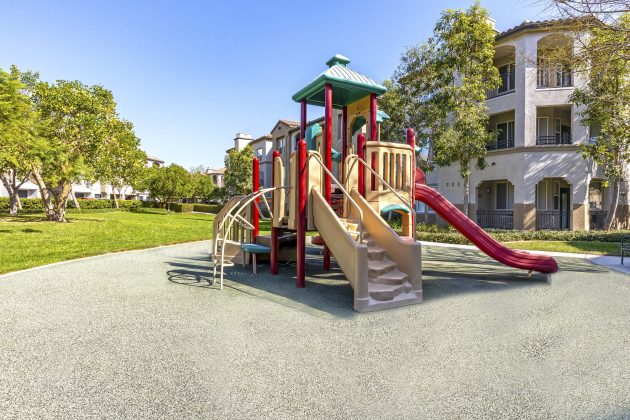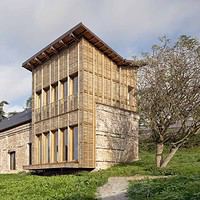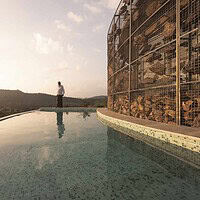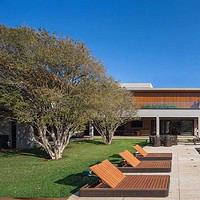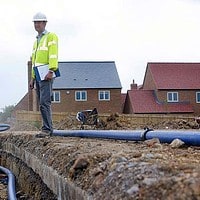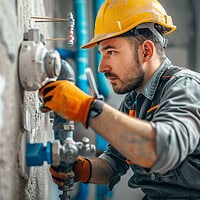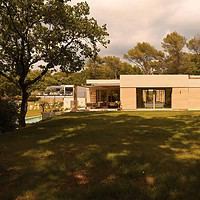Playgrounds promote exercise and encourage kids to get outside. Playgrounds are also great for all ages to destress. Adding a playground to an apartment complex increases its value. Here are some things to keep in mind when designing the space.
1. Start With the Design
The first step is coming up with a functional design plan. Offer equipment that allows for a variety of playing styles. Build structures that have different sounds, sights and textures. This can stimulate a child’s brain.
Also, install a climbing wall to encourage physical activity. To elevate the space choose a theme that matches the apartment community. Suppose the complex promotes healthy eating. Place a community garden next to the playground. If you’re having trouble coming up with features, survey the parents and kids in the building. When buying equipment, keep in mind the age of the kids at the complex. Also, note how many children there are to determine the appropriate size.
2. Make It an Inclusive Space
Make sure the playground is accessible for all children, especially those with disabilities. Have structures that are inclusive and allow children to play together. For example, you could build a ramp for puzzles or sensory activities.
Here are a few more suggestions for the design:
- Have inclusive swings, like Zero-G swing sets.
- Include plenty of auditory, visual and tactile sensors.
- Provide isolated places for kids to relax.
- Add seats with high backs and arm rails.
3. Make Safety a Priority
Follow all local safety regulations when creating the space. Suppose you have to clear away some trees. Make sure you’re not impacting the surrounding wildlife. Also, it’s important to choose the proper building materials.
You want soft surfaces, such as wood chips or rubber. You need at least 12 inches of this material to meet safety standards. In addition, provide space between moving equipment and where children walk around. Have an open layout, so parents can easily monitor their kids.
4. Encourage Free Play
Keep in mind the space doesn’t have to be full of structured activities. Children should be able to use their imagination and build their social skills. Being more creative can also build self-esteem and confidence.
Consider how you can promote more free play. For example, have areas with limited equipment, so kids can use them as simply as backdrops. A small tree trunk could appear to be stepping into the jungle for little ones.
5. Consider Location and Other Essentials
Having a proper plan before starting to install equipment is essential. It can save you stress and money. First, determine the landlord’s goals. Do they want to give tenants an extra outdoor space? It’s also important to consider who will have access to the playground and when. Know this information, when you meet with local representatives to discuss the blueprints.
Next, create a timeline for the project and the best spot to build it. Keep in mind installation can take several weeks. So, having a deadline can prevent delays. Look for suitable areas for the structure. You want to find places with shade and good drainage. Plus, make sure the entrance is accessible for everyone, including those with wheelchairs.
6. Use Quality Playground Equipment
You want to ensure the supplies are safe for the children. So, pick a reputable company that uses sturdy materials and proper installation techniques. Read online reviews and get recommendations to find a trusted vendor.
Make sure it’s a high-quality material, such as galvanized steel, and comes with a warranty. Meet with the installer so you know what to expect upfront. Also, look for installers that use eco-friendly materials, such as recycled plastic.
7. Get Proper Paperwork
If you don’t own the land get any necessary approvals or permits. Also, review local zoning laws and building codes. Check your Local Department of Labor & Industry website for specific information.
Work with the surrounding district to uncover any restrictions. Having these documents in order prevents project delays and heavy fines. Start this process as early as possible.
8. Have a Fundraising Event
Fundraising can be a great way to generate some extra revenue. You can come up with a fun name and see if current residents or community members will chip in. You could also give away free merchandise, like T-shirts.
In addition, partner with local park departments to help spread the word. You could also look for grants or non-profit organizations’ support. Governments can provide grants for community projects. Search online for local resources and programs first. Corporations can also be another source of funding.
9. Add a Fence
Fences can offer privacy and protection for the playground. It ensures vehicles can’t enter the area and kids don’t run off into the parking lot. Check with local safety standards before installing a fence.
There are multiple fencing options to choose from. Chain link materials are the cheapest but don’t provide much visual appeal. Wood offers a classic beauty but is less durable over time.
10. Add Equipment to Encourage Socialization
Spending time at the playground can be good for a child’s social skills. These can then be translated to other areas, such as school and relationships. So, gave elements like group swings and spinners. Also, have platforms with multiple colors and textures to encourage creative play.
These features can encourage more inclusion. This is especially critical for shy kids who may need some persuasion to talk to others. It also gives parents a break from having to play along with their children.
Adding a Playground to Your Apartment
Apartments often offer many amenities. A playground can be a good one to encourage physical activity and a positive mindset. So, follow these steps to create the perfect design.

